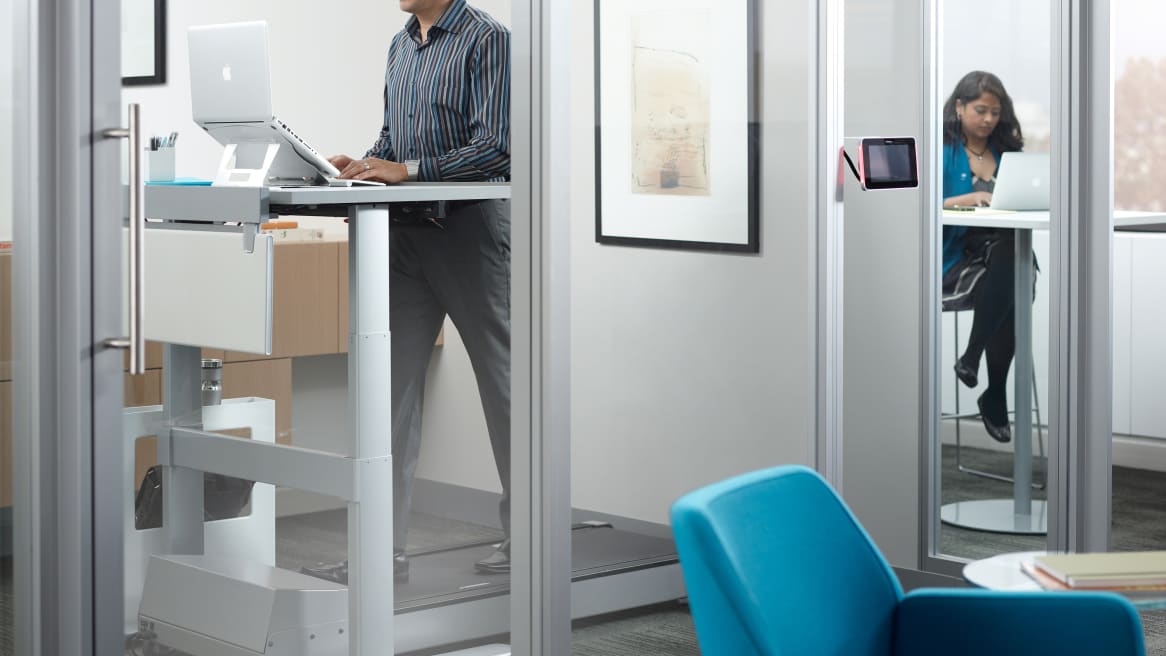Sitting Isn’t the Issue—Static Is
By Ken Tameling
Our vilification of sitting has gone too far. The simple truth is that sitting isn’t “cancer” and it’s not killing us. Sitting is an important part of the day, and one that we cannot practically—and shouldn’t want to—eliminate. In some cases, it’s “how” we might sit, in static postures all day, and the length of time that we sit in those static postures that is impacting our wellbeing and productivity.
Rather than focusing on sitting as a problem, we should have a broader view—that a healthy day finds a balance between sitting, standing, and walking.
This sit, stand, walk philosophy embraces the idea that our bodies aren’t meant to stay in just one posture, and reminds me to keep moving between work zones during the day. My colleagues’ research shows that having a palette, or variety, of places to work—and postures to choose from—encourages wellbeing.
Movement during the day shouldn’t only happen when we change, say, from sit to stand. It is also critically important to move while sitting or standing. Active sitting can mean moving into a range of healthy seated postures—reclining for example. Active standing can mean slightly shifting your weight or propping a foot on a foot support. The key is to avoid holding a static posture for a long period of time. You really need to move and mix it up!
Movement during the day isn’t just critical for physical wellbeing. Recent headlines in The Wall Street Journal and elsewhere speak of the many benefits on a neurological level. We become more engaged, more creative, and more productive when we incorporate movement and activity in our day.
A Prescription for a Healthy Work Day
Sitting: Sitting allows us to deeply engage in focus work. Make sure you have a chair that allows you to move in a range of healthy seated postures. Your chair should allow you to recline and keep you within your “vision and reach” zone when using desk-based technology like a laptop. Your chair should also provide arm support that allows you to keep a tablet or smartphone at eye level, preventing “Text Neck.”
Did you know that sitting…
- reduces standing fatigue?
- allows you to shift some of your upper body weight from your legs and feet (while standing) to the chair (while seated)?
- stabilizes the upper body, making it the most-effective posture for many computer-based tasks?
Standing: Standing postures can refresh and re-energize the body and increase calorie burn through the work day. Find a height-adjustable worksurface in order to help you “mix it up”.
Did you know that standing…
- can increase blood flow, which has cognitive benefits?
- fires up your metabolism, especially after eating?
- offers a break from sitting, particularly if your chair is one that keeps you in a static upright posture all day?
Walking: Try walking, either on a low speed treadmill like the Walkstation or with a coworker during a “walking meeting.”
Did you know that walking…
- gets your blood flowing, burns calories and increases your metabolism?
- helps alleviate muscle strain from static postures—too much sitting or standing in one posture?
The bottom line: for a healthy workday, sit, stand, and walk—each offer benefits. When seated or standing, keep moving. Balancing active sitting and standing with walking helps maintain physical and cognitive wellbeing. You’ll not only feel better, but will also be more engaged in your work and with your team. Ultimately, that leads to a stronger organization.
Check out Steelcase’s blended posture strategy and let us know which posture you need more of in your work day. Connect with us on Facebook, Twitter and Instagram today!


